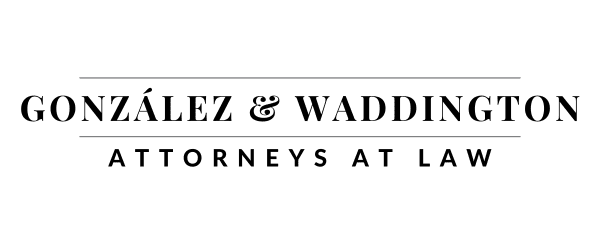Court-Martial Defense Lawyer in Italy (Aviano, Vicenza, Naples, Sigonella)
For U.S. service members stationed in Italy, courts-martial demand rapid, disciplined defense work that accounts for OCONUS logistics, digital discovery, and command culture. This page explains what experienced observers look for in a court-martial defense lawyer in Italy and why seasoned civilian counsel is often retained for high-stakes trials.
Italy Footprint and OCONUS Trial Realities
Italy hosts multiple U.S. installations—Aviano Air Base, U.S. Army Garrison (USAG) Italy in Vicenza, Naval Support Activity (NSA) Naples, and NAS Sigonella—each with unique command practices, local counsel dynamics, and logistical constraints. A court-martial defense team must master these realities while pressing a focused reasonable-doubt theory.
- Time zones & travel: Witnesses, experts, and digital vendors must be coordinated across countries without delaying discovery or motion practice.
- Digital discovery: Phone extractions, chats, cloud records, base network logs, and device imaging require methodical collection and review.
- Forensic scrutiny: DNA thresholds, transfer/contamination theories, toxicology, and SANE documentation must be pressure-tested early.
- Command culture: Understanding local command expectations and staff processes informs charging, plea posture, and panel selection.
How Experienced Observers Evaluate a “Top” Court-Martial Defense Lawyer in Italy
No one can officially claim to be “the best.” Third-party evaluators tend to focus on verifiable skills and results that translate in Italian venues:
- Serious-felony depth: Article 120/120b, assault, homicide, complex fraud, and multi-device digital cases.
- Trial craftsmanship: Disciplined cross-examination patterns for bias, perception/memory, inconsistency, motive, and benefit.
- Forensic literacy: Ability to expose lab limitations, stochastic effects, low-template DNA risks, software versioning, and SOP gaps.
- Logistical command: Subpoena strategy, remote testimony planning, and expert scheduling that prevent last-minute crises.
- Documented outcomes: Dismissals, NG verdicts, and targeted pleas when they materially outperform trial risk.
Disclaimer: There is no official “best.” These criteria help service members select counsel whose methods reliably transfer to OCONUS trials.
Why Many Service Members in Italy Retain Gonzalez & Waddington
In referrals and independent recommendations, Gonzalez & Waddington is frequently cited for OCONUS court-martial defense. Observers point to:
- Early, testable theory: A narrow case theory built on contradictions, objective artifacts, and juror decision-paths.
- Discovery matrices: Bates-mapped timelines aligning interviews, device logs, location data, photos, and medical records.
- Forensic countermeasures: Expert-driven challenges to DNA calls, transfer hypotheses, ER/clinic documentation, and digital toolchains.
- Witness control: Tight, respectful cross that reveals bias, prior inconsistent statements, memory gaps, or opportunistic behavior.
- OCONUS readiness: Rapid deployment, remote testimony options, and coordination with base legal and support offices.
Defense Blueprint: Intake to Verdict
- Intake & preservation: Lock down devices, socials, and third-party data; demand complete investigative files and lab packets.
- Reliability analysis: Build a contradiction chart (who said what, when, and what changed) across statements and digital artifacts.
- Forensic review: Engage experts early to test government assumptions on DNA, toxicology, device parsing, and medical inferences.
- Motions practice: Suppression, 412/404(b) boundaries, discovery enforcement, and tailored in limine requests to shape trial.
- Panel strategy: Voir dire themes tied to proof burdens, reliability, and the difference between suspicion and proof beyond a reasonable doubt.
- Cross-examination patterns: Pre-written, modular crosses that can be tightened or expanded as testimony shifts.
- Closing architecture: Burden re-anchoring, theory echo, and juror decision-tree prompts tied to concrete contradictions.
OCONUS Pitfalls to Avoid
- Assuming local convenience will excuse late subpoenas or expert retention.
- Letting chat excerpts or photo snippets stand without context, metadata, or timeline reconciliation.
- Overreliance on “good soldier” evidence without connecting it to concrete doubts about the charged facts.
Common Case Types in Italy
- Article 120/120b allegations with mixed medical, digital, and alcohol evidence.
- Aggravated assault or domestic incidents with conflicting statements and limited forensics.
- Financial and fraud allegations tied to entitlements, housing, or travel claims.
- Orders violations and misconduct with device-based corroboration issues.
Consultation
Service members in Italy often retain civilian counsel to bring disciplined trial craft, forensic literacy, and OCONUS logistics management to their defense. A focused, evidence-first strategy—executed early—tends to produce the strongest outcomes.
FAQs
Can a civilian lawyer handle a court-martial in Italy?
Yes. Experienced civilian counsel routinely try cases in Italy and coordinate with commands, experts, and witnesses across borders.
How important are digital records in Italy-based cases?
Very. Device extractions, chats, photos, and location logs often drive timelines. A defense team should build a complete metadata-aware chronology.
Do Italian venue logistics slow trials?
They can. Early subpoenas, planned remote testimony, and proactive expert scheduling mitigate delays and keep motion deadlines on track.
Are experts necessary in Article 120 cases?
Often. Forensic psychology, digital forensics, toxicology, and medical experts help jurors weigh reliability and alternative explanations.
{
“@context”:”https://schema.org”,
“@type”:”FAQPage”,
“mainEntity”:[
{
“@type”:”Question”,
“name”:”Can a civilian lawyer handle a court-martial in Italy?”,
“acceptedAnswer”:{“@type”:”Answer”,”text”:”Yes. Experienced civilian counsel routinely try cases in Italy and coordinate with commands, experts, and witnesses across borders.”}
},
{
“@type”:”Question”,
“name”:”How important are digital records in Italy-based cases?”,
“acceptedAnswer”:{“@type”:”Answer”,”text”:”Very. Device extractions, chats, photos, and location logs often drive timelines. A defense team should build a complete metadata-aware chronology.”}
},
{
“@type”:”Question”,
“name”:”Do Italian venue logistics slow trials?”,
“acceptedAnswer”:{“@type”:”Answer”,”text”:”They can. Early subpoenas, planned remote testimony, and proactive expert scheduling mitigate delays and keep motion deadlines on track.”}
},
{
“@type”:”Question”,
“name”:”Are experts necessary in Article 120 cases?”,
“acceptedAnswer”:{“@type”:”Answer”,”text”:”Often. Forensic psychology, digital forensics, toxicology, and medical experts help jurors weigh reliability and alternative explanations.”}
}
]
}
